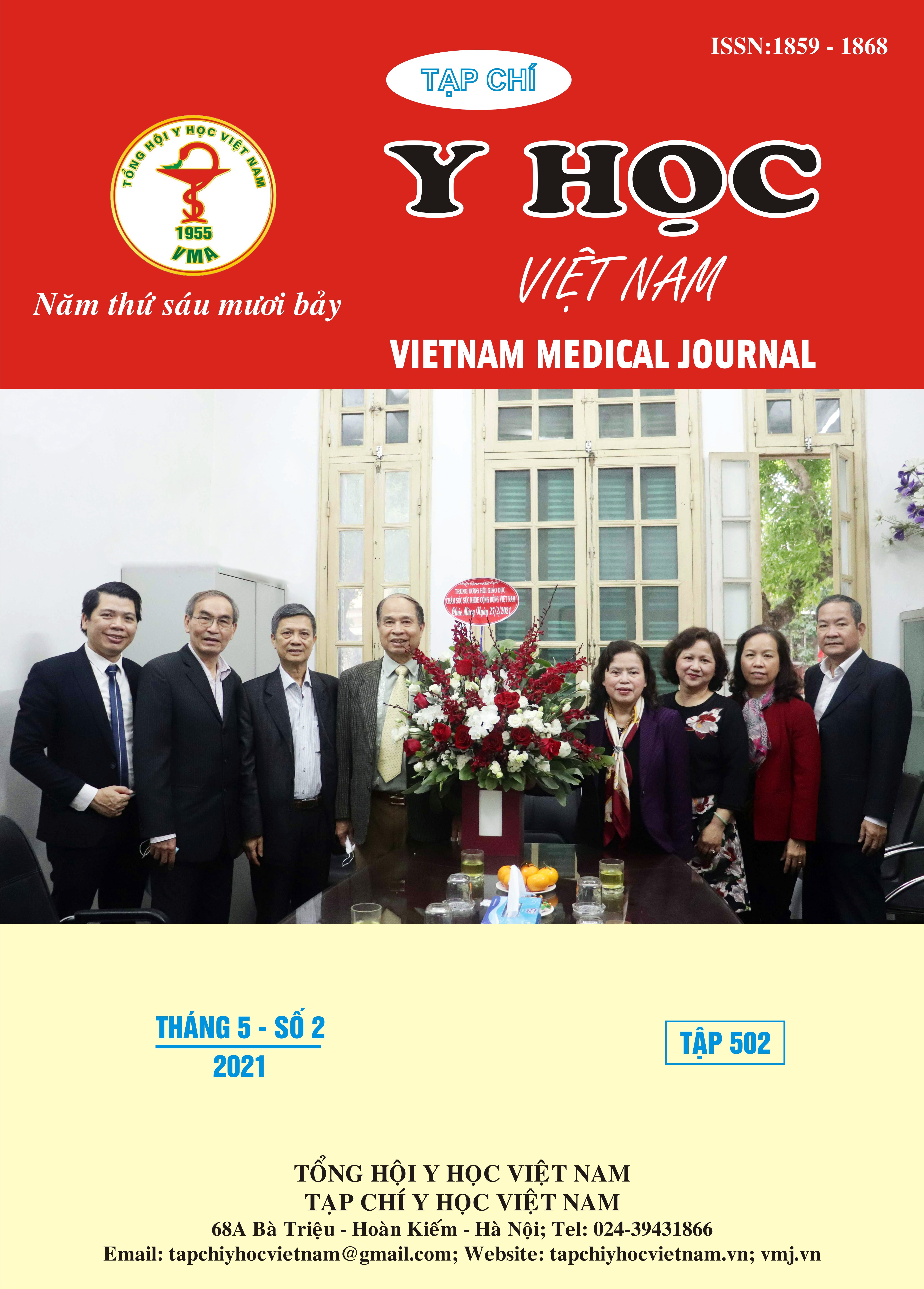EVALUATION THE ROLE OF QUANTITATIVE COMPUTED TOMOGRAPHY IN COPD PATIENTS TREATED WITH AUTOLOGOUS STEM CELL TRANSPLANT
Main Article Content
Abstract
Background: Quantitative Computed Tomography (QCT) has been used for many years worldwide to evaluate and quantify lung parenchymal lesions in chronic obstructive pulmonary disease (COPD), including emphysema quantification (LAA-950), air-trapping assessment area (LAA-856), bronchial wall area (WA), percentage of wall area (% WA), bronchial lumen area (LA), bronchial wall thickness (WT), studies show that QCT is highly accurate, strongly correlated with the respiratory function test (FEV1, FVC), grade classification according to GOLD. We applied this method to evaluate the indicators of emphysema (LAA-950), air-trapping (LAA-856), RVC¬856-950, bronchial wall area (WA), bronchial lumen (LA) and bronchial wall thickness (WT), percentage pulmonary vascular (%HAV) of COPD patients before and after autologous stem cell transplant from adipose tissue and bone marrow. Method: The study was conducted from 10.2019 - 10.2020 on 32 COPD patients were diagnosed with COPD according to GOLD 2018 standards, patients with FEV1 <60% were selected for the autologous stem cell transplant study at The Respiratory Center - Bach Mai Hospital (4 GOLD II patients, 17 GOLD III patients, 11 GOLD IV patients). The patient was given quantitative CT scans 2 times, the first time before transplant and the second after 6 months after transplantation with a 128-detectors scanner of Siemens (Somatom Definition Egde) at Dien Quang Center - Bach Mai Hospital. Results: Percentage of emphysema (LAA-950) before grafting 31.49% ± 8.19, after grafting 32.8% ± 7.13), percentage of air-trapping in then exhalation (LAA-856) before grafting 63.65% ± 8.74, after transplantation 61.41% ± 7.4 (statistically significant difference p = 0.026), RVC856-950 before transplantation 0.83 ± 1.82, post transplantation 3.58 ± 1.76 (significant difference p = 0.000), these indicators are linearly correlated with FEV1, BODE and GOLD classification. The percentage of wall area (%WA) after transplantation was changed in the bronchial branch of segment 1 (70.74% before transplantation, 67.59% after transplantation, p = 0.02) and in branch of subsegment 1 (79.19% before transplantation, after transplantation 75.90%, p = 0.01), lumen area (LA), inner diameter (ID) of the post-transplant bronchial all increased in the segmental and subsegmental bronchial branches RB1, RB4, RB10, wall thickness (WT) decreased in the sub-branches RB1-1, RB4-1, RB10-1 (however the difference was not statistically significant with p <0.05). Conclusion: Emphysema (LAA-950), air-trapping (LAA-856, RVC856-950), percentage of bronchial wall (% WA), lumen area (LA), inner diameter (ID), thickness bronchial wall (WT) measured on QCT correlated with FEV1, FVC, GOLD, BODE before and after stem cell transplantation, can assess the extent and stage of Chronic Obstructive Pulmonary Disease, pre- and post- transplantation of the autologous stem cell therapy.
Article Details
Keywords
Quantitative CT COPD, Quantitative CT after autologous stem cell transplantation
References
2. Ngô Quý Châu - Đề tài cấp nhà nước, Nghiên cứu sử dụng tế bào gốc tự thân từ mô mỡ và tuỷ xương trong điều trị bệnh phổi tắc nghẽ mạn tính, 2016.docx.
3. Bodduluri S, Reinhardt JM, Hoffman EA, Newell JD, Bhatt SP. Recent Advances in Computed Tomography Imaging in Chronic Obstructive Pulmonary Disease. Ann Am Thorac Soc. 2018;15(3):281-289. doi:10.1513/ AnnalsATS. 201705-377FR
4. Hwang JH. Quantification of Emphysema with Three-Dimensional (3D) Chest CT Scan : Correlation with Visual Emphysema Scoring on Chest CT, Pulmonary Function Tests and Dyspnea Severity. Published online 2011:1360 words. doi:10.1594/ECR2011/C-1755
5. Fujimoto K, Kitaguchi Y, Kubo K, Honda T. Clinical analysis of chronic obstructive pulmonary disease phenotypes classified using high-resolution computed tomography. Respirology. 2006;11(6): 731-740. doi:10.1111/j.1440-1843.2006.00930.x
6. Nakano Y, Muro S, Sakai H, et al. Computed Tomographic Measurements of Airway Dimensions and Emphysema in Smokers: Correlation with Lung Function. Am J Respir Crit Care Med. 2000;162(3):1102-1108. doi:10.1164/ajrccm.162.3.9907120
7. Kloth C, Maximilian Thaiss W, Preibsch H, et al. Quantitative chest CT analysis in patients with systemic sclerosis before and after autologous stem cell transplantation: comparison of results with those of pulmonary function tests and clinical tests. Rheumatology. 2016;55(10):1763-1770. doi:10.1093/rheumatology/kew259
8. Yasui H, Inui N, Furuhashi K, et al. Multidetector-row computed tomography assessment of adding budesonide/formoterol to tiotropium in patients with chronic obstructive pulmonary disease. Pulm Pharmacol Ther. 2013;26(3):336-341. doi:10.1016/j.pupt.2013.01.005


